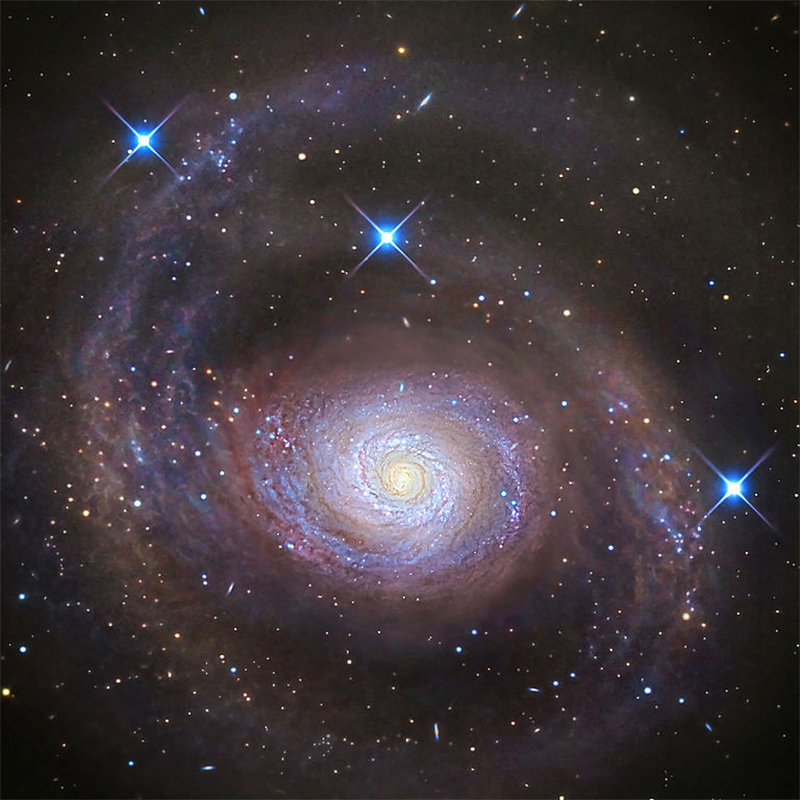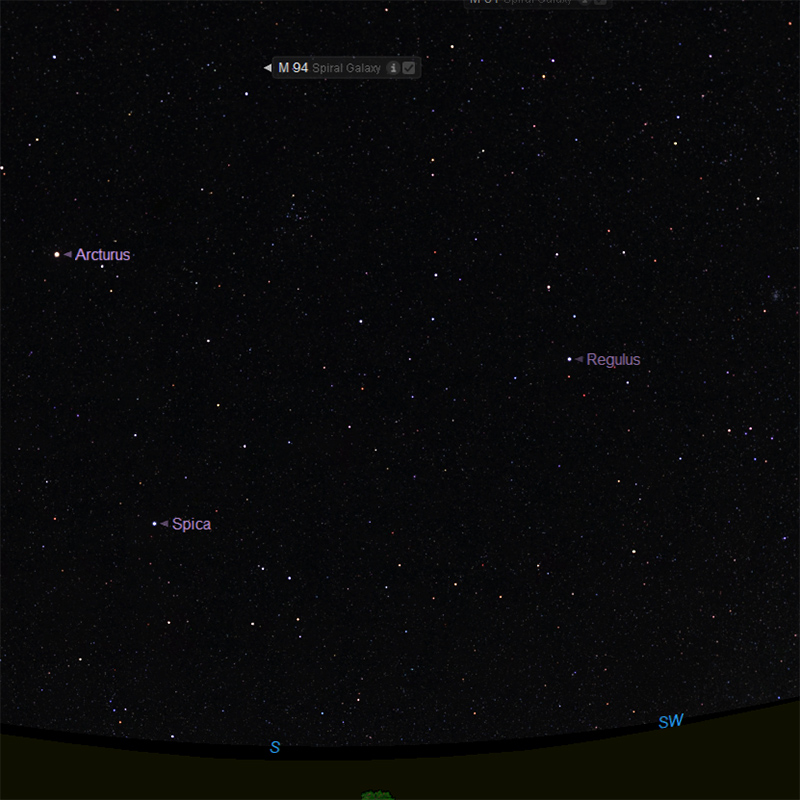M94 - The Cat's Eye Galaxy

Credits: NASA and The Hubble Heritage Team (AURA/STScI)
M94, also known as Cat’s Eye Galaxy or Croc’s Eye Galaxy, is a spiral galaxy located in the constellation Canes Venatici. The Cat’s Eye Galaxy has an apparent magnitude of 8.99 and lies at a distance of 16 million light years from Earth. It has the designation NGC 4736 in the New General Catalogue. Messier 94 occupies an area of 11.2 by 9.1 arc minutes of apparent sky, which corresponds to a linear extension of 50,000 light years. The galaxy can be spotted with binoculars under exceptionally good conditions, but only appears as a small, dim patch of light. Even small telescopes will reveal the object as a galaxy.
Smaller instruments show M94 as a fuzzy patch with a brighter centre, while 6-inch and 8-inch telescopes reveal a bright, condensed nucleus surrounded by a nebulosity that hints at spiral structure. Larger amateur telescopes reveal a bright ring around the galaxy’s nucleus and other details of M94’s structure.
Facts about M94 by Keith Turnecliff
Messier 94 is estimated to contain 40 billion stars. The galaxy is receding from us at approximately 308 km/s.
Its main disk is about 50,000 light years in diameter, but the galaxy has a considerably fainter outer ring that extends for at least another 30,000 light years.
The best time to observe M94 is during May.

Best viewed with resolution 1920 x 1080.
Credits: Image courtesy of Starry Night Pro Plus 8, researched and implemented by Keith Turnecliff.